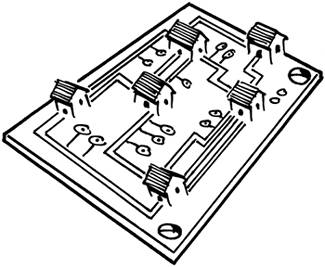the file system
| the extension that follows the last period of a file name represents the format of that file. a file's format tells the computer what kind of file it is so that the computer can attempt to associate the appropriate program to it for opening the file. just because you change the extension doesn't mean you've changed the format (because there is hidden data within the file), it just means you've made an invalid format. some formats are considered "standards," which pretty much means that they follow guidelines to make things easier for people: .jpeg is an image, .wav is a sound file, etc. developers sometimes create their own formats or change how a particular format is processed, and this more or less means there are a lot of freakin formats. a file can even have no extension at all. the format you should be most paranoid about opening (if you don't know what it is) is the .exe format. an executable is a binary package (a program), where the code or actual nature of the program is hidden. how it works is a developer writes code with a human-readable language, then they "compile" it (or translate it into a machine-readable language), and a baby program (exe) is born. it can be disguised to look like anything; therefore you should only open these files from trusted sources. not all code needs to be compiled; some languages use an interpreter (or engine) to process the code, which would make it more of a "scripting" language than a "programming" language. a script-engine handles the binary crap in the background, meaning compiled languages usually execute faster as they skip the trip to an engine; however scripting languages are usually easier to work with. in either case, just because it's not an executable file still doesn't mean it is safe. if you come across a file extension that you're not familiar with, go to www.whatis.com or www.google.com and search the phrase "what is every file format in the world?" the whatis.com website has an alphabetical list of extensions/definitions set up to address that exact question.
a "bit," which is short for "binary digit," is the smallest unit of data, which can only hold a one or a zero. really, a bit is just a charge placed on a metallic line (called a "trace") of a circuit board. binary is the numbering system used to express this (1 = a charge, 0 = no charge). think of it like this: the roads of your town are traces, buildings are chips on a circuit board (the earth), and humans are bits running back and forth to carry out instructions and/or processes. are you a one (working individual) or a zero (lazy mofo)? bits are used in combination to create useful data, and the quantities of these bits are described as follows:
|
